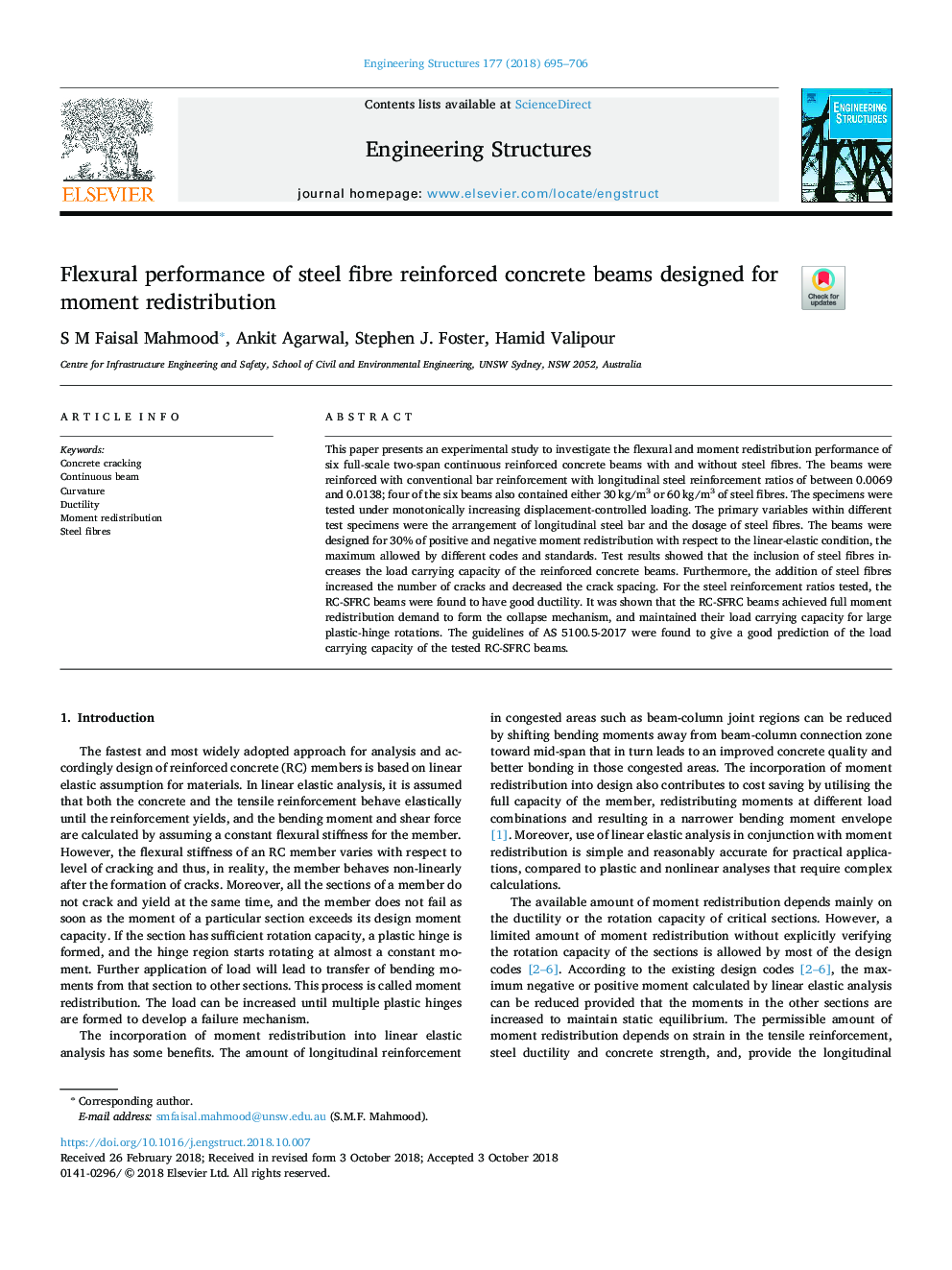| Article ID | Journal | Published Year | Pages | File Type |
|---|---|---|---|---|
| 11021368 | Engineering Structures | 2018 | 12 Pages |
Abstract
This paper presents an experimental study to investigate the flexural and moment redistribution performance of six full-scale two-span continuous reinforced concrete beams with and without steel fibres. The beams were reinforced with conventional bar reinforcement with longitudinal steel reinforcement ratios of between 0.0069 and 0.0138; four of the six beams also contained either 30â¯kg/m3 or 60â¯kg/m3 of steel fibres. The specimens were tested under monotonically increasing displacement-controlled loading. The primary variables within different test specimens were the arrangement of longitudinal steel bar and the dosage of steel fibres. The beams were designed for 30% of positive and negative moment redistribution with respect to the linear-elastic condition, the maximum allowed by different codes and standards. Test results showed that the inclusion of steel fibres increases the load carrying capacity of the reinforced concrete beams. Furthermore, the addition of steel fibres increased the number of cracks and decreased the crack spacing. For the steel reinforcement ratios tested, the RC-SFRC beams were found to have good ductility. It was shown that the RC-SFRC beams achieved full moment redistribution demand to form the collapse mechanism, and maintained their load carrying capacity for large plastic-hinge rotations. The guidelines of AS 5100.5-2017 were found to give a good prediction of the load carrying capacity of the tested RC-SFRC beams.
Related Topics
Physical Sciences and Engineering
Earth and Planetary Sciences
Geotechnical Engineering and Engineering Geology
Authors
S M Faisal Mahmood, Ankit Agarwal, Stephen J. Foster, Hamid Valipour,
